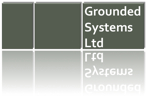Grounded Systems Modelling
Grounded Systems Modelling is a hybridisation of Grounded Theory with System Dynamics modelling. Grounded Theory is about taking a structured way of interpreting data with a view to generating theories about "what is going on". A Grounded Theorists is usually setting out to discover something about a group, a system, a community; some collection of people that makes sense to study. For a modeller this could be the users of a building or of a transport system, residents of a city or a community, consumers of a utility service such a water or electricity, or users of an IT system. We know that these systems are difficult to understand by observation of the many examples of project failures arising when we try to change them. System Dynamics modelling is a well known and standard approach for developing insight into the dynamic behaviour of complex systems with a view to planning and developing interventions.
A description of using the approach for an organisation and results have been published in two papers:
- Dunford, C. N., Yearworth, M., York, D. M. & Godfrey, P. (2013) Systems Practice: Enabling Quality in Design. Systems Engineering, 16(2), 134-151 DOI 10.1002/sys.21220
- Dunford, C. N., Yearworth, M., York, D. M., Godfrey, P. & Parsley, A. (2012) Using Systems Practice to Enable Quality in Design. Procedings of the IEEE Systems Conference (IEEE SysCon 2012). Vancouver, Canada. DOI 10.1109/SysCon.2012.6189497
A more theoretical study on entrepreneurialism using this approach was presented at the System Dynamcis conference in 2010:
- Yearworth, M. (2010) Inductive Modelling of an Entrepreneurial System. Procedings of the 28th International Conference of the System Dynamics Society. Seoul, Korea. view
A paper on the theoretical underpinnings of the approach and its positioning as multimethodology has been accepted for publication in the European Journal of Operational Research:
- Yearworth, M. & White, L. (2013) The Uses of Qualitative Data in Multimethodology: Developing Causal Loop Diagrams During the Coding Process. European Journal of Operational Research, 231(1), 151-161 DOI 10.1016/j.ejor.2013.05.002
